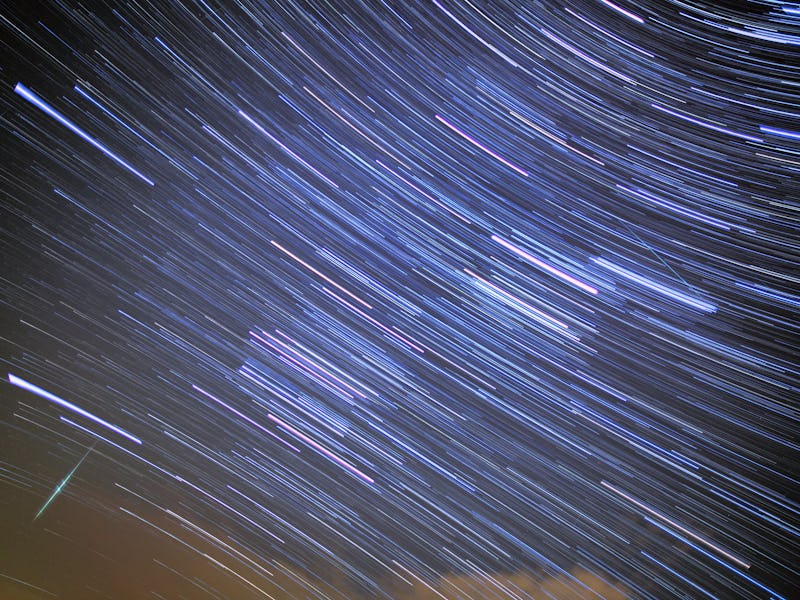How Will Tokyo's Artificial Meteor Shower Work?
The 2020 Tokyo Olympics promises apocalyptic entertainment.

The 2020 Olympic games in Tokyo are already contentious: Complaints about poorly planned stadiums and Japan’s struggles with the national debt have deflated the pomp of the moment. All the more reason to go all out Beijing-style with the opening ceremonies. And Japan intends to do just that, by producing an artificial meteor shower.
This is the part of the article where you get nervous, then intrigued, then nervous again.
The people claiming that they can pull off this feat — seemingly devised to one-up China’s weather control — work for a startup called ALE, which has it’s talons in multiple universities in the country. ALE’s concept involves using a proprietary chemical mixture which, when packed into tiny inches-wide balls, can be ejected from an orbital satellite about 250 to 310 miles above the ground. The projectiles shoot into Earth’s atmosphere and create a visual effect similar to the Perseids.
The process is said to cost about $8,200 per meteor for potential buyers. And, yes, according to the researchers, the celestial light coming from the fake meteors would be bright enough to be seen even in areas with high amounts of light pollution.
Because the company is not disclosing what exactly its meteors are made of, it’s not completely clear how this works or why. Natural shooting stars are visible when large bits of dust and debris from space pass through the Earth’s atmosphere and burn up. The artificial ones are said to burn up on entry while traveling about five miles per second, and can be modified to create streaks of different colors.
ALE is even touting scientific uses for artificial meteor showers. An aerospace engineer at Tokyo Metropolitan University told AFP that light from an artificial meteor could be analyzed by scientists to measure temperature, density, and movement of the atmosphere at specific elevations and times researchers are ready to study them.
A big concern that the company hasn’t addressed yet is the consequence of allowing artificial chemicals to burn up in the atmosphere. If CFCs are able to put a whole in the ozone layer, surely something that scorches through the sky would have some kind of weird effect on the Earth’s atmosphere. But again, until we know what the hell is in ALE’s secret formula, there’s no telling what these effects might look like.
In any case, ALE expects its artificial showers to be available by early 2016. If the first demonstrations prove successful, there’s a good chance we might see the Tokyo Games open up four years later with a demonstration of the country’s power over lights in the night sky.